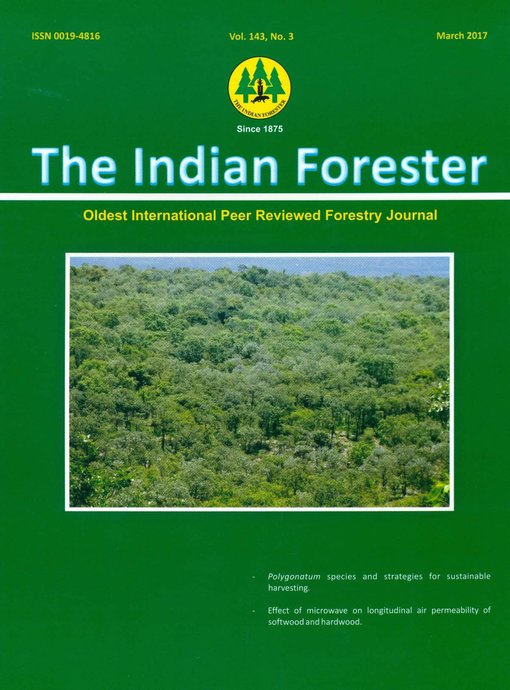Studies on Area Assessment under Mangroves of Raigad District, Maharashtra, India
DOI:
https://doi.org/10.36808/if/2017/v143i3/113620Keywords:
Change Detection, Mapping, Mangroves, Raigad, Maharashtra.Abstract
Mangroves of Maharashtra are under great threat of human enchroachment. The increased pressure over the mangrove habitat degrade the mangrove area. The Raigad district is close to the Mumbai and the activities in Mumbai have the reflections over the Raigad mangroves. In the present work attempt is made to analyse the area occupied by the mangroves in the coastal area of Raigad district and the changes in the mangrove habitat over the period of time using Google Earth Pro images and ground observations. The threats to the mangroves of Raigad were also analysed, it was observed that there is slight decline in the mangrove area in last ten years, 103.80 Km2 in 2005 to 88.09 Km2 in 2015. But, the mangroves are under great threat and continuous urabanization will lead into the destruction of this habitat.References
Bhosale L.J. (2005). Mangroves of Maharashtra. Shivaji University, Kohlapur, India Publication, 315 pp.
Blasco F. and Aizpuru M. (2002). Mangroves along the coastal stretch of the Bay of Bengal: Present Status, Indian J. Marine Sciences, 31(1): 9-20.
Das S. and Singh T.P. (2013). Mapping Vegetation and Forest Types using Landsat TM in the Western Ghat Region of Maharashtra, India. International J. Computer Applications, 76 (1): 33-37.
Deshmukh S.A. (2010). Coastal Isues and Concerns:Challenges for the research community, Report prepared by consortium of Caostal Academic Institutions for the Antaional Centre for Sustainable Coastal Management, Anna University, Chennai, 35-45pp.
Dhargalkar V.K, Souza R. D., Kavlekar D.P. and Untawale A. G. (2014). Mangroves of Goa, Published by Forest Department, Governmnet of Goa, Goa,
Duke N.C., Meynecke J.O., Dittmann S., Ellison A.M., Anger K., Berger U., Cannicci S., Diele K., Ewel K.C. and Field C.D. (2007).A world without mangroves? Science, 317: 41-42.
Friess D. A., Phelps J., Lelong R.C., Lee W.K., Wee A.K.S., Sivasothi N., Oh R.R.Y. and Webb E.L. (2012). Mandai Mangrove, Singapore:Lessons for the Conservation of Southeast Asia,s Mangroves. The Raffles Bulletin of Zoology, Supplement No. 25, pp. 55-65.
FSI ( 2013). State of Forest Report, 2013. Forest Survey of India, Dehradun, 252 pp.
Giri C., Ochieng E., Tieszen L.L., Zhu Z., Singh A., Loveland T., Masek J. and Duke N. (2011). Status and distribution of mangrove forests of the world using earth observation satellite data. Global Ecology and Biogeography, 20: 154-159.
Giri C., J. Long, S. Abbas, R. M. Murali, F. M. Qamer, B. Pengra, D. Thau. (2014 ). Distribution of dynamics of mangrove forests of South Asia. J. Environment Management, 1-11.
Jagtap T.G., Naik S., and Nagle V.L. (2001). Assessment of Coastal Wetland Resources of Central West Coast, India, using LANDSAT Data. Photonirvachak J. the India Society of Remote Sensing, 29 (3): 140-150.
Kathiresan K. and Qasim S.Z. (2005), Biodiversity of Mangrove Ecosystem, Hindustan Publishing Corporation, India, , pp 251.
Kathiresan K. and Bingham B.L. (2001). Biology of mangroves and mangrove Ecosystems. Advances in Marine Biology, 40: 81-251.
Krishnamurthy K., Choudhury A. and Untawale A.G. (1987). Status report, Mangroves in India. Ministry of Environment and Forest, Govt. of India, New Delhi,
Mandal R.N. and Naskar K.R. (2008). Diversity and classification of Indian mangroves; a review. Tropical Ecology, 49 (2):131-146,
Mani Murali R., Vethamony P., Saran A., Jayakumar S. (2006). Change detection studies in coastal zone features of Goa, India by Remote sensing. Curr. Sci. India, 91: 816-820.
Misra A., Mani Murali R. and Vethamonu P. (2015). Assessment of Land –Use/ Land- Cover (LULC) and Mangrove change along the MandoviZuari Complex of Goa, India, Arab. J. Geosci., 8: 267-279.
Nayak S. and Bahuguna A. (2001) Application of Remote sensing data to monitor mangroves and other coastal vegetation of India. Indian J. Marine Sciences, 30 (4): 195-213.
Panigrahy R.K., Kale M.P., Datta U., Mishra A., Banerjee B. and Singh S. (2010). Forest cover change detection of Western Ghats of Maharashtra using satellite remote sensing based visual interpretation technique. Current Science, 98 (5): 657-664.
Singh N.P. and Kartikeyan S. (2000). Flora of Maharashtra state-Dicotyledonous. Vol. I Botanical Survey of India, Calcutta,.
Untawale A.G. (2013). The status of Mangrove ecosystem in India, In: The Proceeding of International Workshop on Mangrove Conservation in India.
http://google-latlong.blogspot.in/2015/01/google-earth-pro.html.
Downloads
Downloads
Published
How to Cite
Issue
Section
License
Unless otherwise stated, copyright or similar rights in all materials presented on the site, including graphical images, are owned by Indian Forester.





